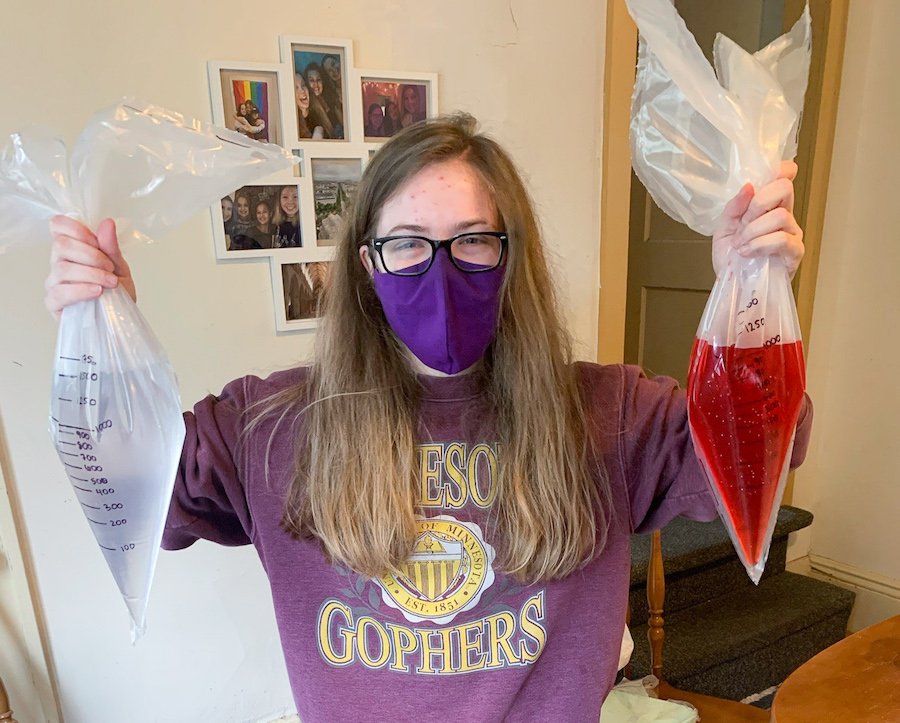Student-led innovation aims to reduce maternal mortality

Photo credit: U of M School of Nursing
Biomedical engineering students invent the DuoPouch to diagnose hemorrhages in patients
March 7, 2022
The maternal mortality rate in the U.S. is the highest of any developed country, and that rate—currently 17.2 per 100,000—keeps climbing. Five University of Minnesota College of Science and Engineering (CSE) students and one experienced nurse-midwife set out to help change that.
The team of U of M School of Nursing Assistant Professor Carrie Neerland, who served as clinical adviser, and CSE undergraduates Lexi Kedzierski, Josh Stadler, Emma Sethi, Rachel Gasser, and Emily Chandler developed the DuoPouch: a calibrated, two-pouch drape to diagnose postpartum hemorrhage, a leading cause of maternal deaths.
The DuoPouch was recognized by the National Institutes of Health and VentureWell with an honorable mention for innovation in the 2021 Design by Biomedical Undergraduate Teams (DEBUT) Challenge. The team accepted the honor, which includes a $1,000 award, at the annual Biomedical Engineering Society Conference in early October. The device was also featured in the U of M Department of Biomedical Engineering Senior Design Showcase in May, where it won a People’s Choice Award.
“There’s a lot of research and money going into other fields, while labor and delivery is seen as something that just happens,” said Gasser, who graduated in May 2021 and is now pursuing her master’s in biomedical engineering at the U of M.
“Maternal health isn’t perceived as the priority that other things are,” she noted.
Neerland suggested that the students conduct focus groups—interviewing obstetricians, labor and delivery nurses, and nurse-midwives to learn about some of the hurdles in their work.
Currently, many labor and delivery units use plastic drapes designed for urology. However, it’s not a great solution.
“We have to open up this mesh part to get it even to work correctly for us, because it’s not made for a birth,” Neerland said. “The plastic isn’t the most comfortable, and often the blood slides back beyond the person’s buttocks. One of [the students’] innovations was to have the drape be made of a fabric-like material that’s more comfortable.”
Another was to make a two-pouch system: one pocket to capture amniotic fluid, if the patient’s water breaks, and another to capture blood. That pocket also has measurements on it that allow providers to accurately gauge, at a glance, just how much blood the patient has lost.
The DuoPouch is elegant in its simplicity—and cost-effective as well.
This could be used anywhere—not just in hospitals, not just in places with electricity—because people give birth everywhere,” Gasser said. “And people are suffering unnecessarily.”
Neerland’s collaboration with the students came about as a result of a professional connection with Shai Ashkenazi, associate professor of biomedical engineering.
“Nurses are making adaptations to existing tools all of the time,” she said. When a team of fledgling engineers bring their skills and creativity to the process, Neerland added, it becomes so much better.
Adapted from Minnesota Nursing Magazine; read the original story on the School of Nursing website.
If you’d like to support students in the University of Minnesota College of Science and Engineering, visit our CSE Giving website.
